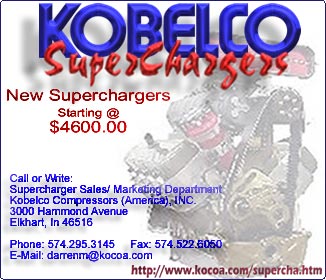
DRO: How many
cars in the field? Four or five?
CC: Yeah, you
know you never can tell. It was completely disorganized
and they called Top Fuel to the lanes and Top
Fuel would get there when they were done with
their barbecue. I wouldn't recommend that for
anybody; it's a real sort of a Beckett play,
waiting for Top Fuel because it's never go show
up and then it kind of does but then it was
so anti where proper drag racing does and it
was just so refreshing in its ineptitude and
then it got really good. People really got their
acts together and experienced a really nice
growth that was reflected by the economy. You
know, during the Clinton years, love him or
hate him, they were a real boom and I think
that some people measure the strength of the
US economy in housing starts. I measure it by
how many Top Fuelers show up at the March meet.
It got to the point where there were 30 Top
Fuel cars showing up for an eight-car show or
a six-car show and it was just tremendous, but
yeah, it was at some point in my life that the
drag racing part just became a lot less interesting
and the weird stuff that exists in the strange
vacuum, is a lot more interesting.
DRO: About the
same time that you discovered or became a part
of the Internet. Why did a web site manifest
itself as your outlet?
CC: Well, there
are conflicting stories about this. The first
one is I was dating a girl and she said the
information superhighway was not coming through
my house. I totally understood what she said,
and the last thing we needed was more noise
and more information, and so when the Internet
phenomenon started, when the height was in full
effect, I was very much against it. At the time
I was writing for drag racing magazines and
Super Stock & Drag Illustrated was probably
the ones I contributed to the most. Super Stock
was owned by Bob Guccione and his General Media
Empire and Guccione's daughter was head of electronic
media or something like that. She insisted --
I think her name was Dina Guccione -- Super
Stock or the automotive group of books owned
by
ADVERTISEMENT
 |
General
Media have a web presence. So, the editor of
Super Stock, Steve Collison, was just riffing
and he said, "By the way we've got to have a
web site or there'll be blood in the halls,"
and I said "Steve, what's a web site?" He said,
"I don't know but we have to have one."
That moment to me was rather fascinating because
there was really something going on there but
nobody knows what it was. There's the Oklahoma
Land Rush or the 49er's in San Francisco, whatever
metaphor you want to use, but something was
happening. There's this movement and since nobody
knew what it was, I felt I certainly don't know
anything less than anybody else so I'll become
the expert. I struck a deal with Steve Collison
and Super Stock and said, "Let me be in charge
of editorial content for your web site." Steve
obviously had his hands full with the print
side and, of course, the number crunchers at
the Guccione empire. General Media didn't care
that there weren't any hours in the day left
to run anything else besides the magazine. They
wanted it done and they wanted it spearheaded.
So, he just deflected it to me, which I questioned
not knowing what a web site was.
Then their story by a Super Stock contributor
was that I hated the Internet. I was in the
Super Stock offices one day and they had a browser
and we didn't even know what a browser was.
It was like Netscape 2 or something like that
and there was also a search engine. I keyed
on my name and I found stuff and my ego took
over and I said, "Wow."
DRO: Some validation.
CC: So, I really
do not remember it happening that way, but somebody
else does. But regardless, that was the deal,
the original web site was set up for Super Stock
& Drag Illustrated. I felt they had a reasonably
cool idea because Super Stock three years before
had created this on-line virtual museum on-going
exhibition. You can talk about Don Garlits and
Shirley Muldowney and come back number 47 for
either of them and you can create a hypertext
link to Shirley and you can show how she is
done at every U.S. Nationals she is entered
in, and you could do stories that were in the
print versions of these magazines. So my goal
was very lofty in that I wanted to archive the
entire body of work of Super Stock electronically
and of course you come to realize there were
only a handful of nut cases that were really
interested in that stuff. Drag racing is much
more niche than any of us are willing to admit
and I was in denial about that for years. That
was genesis of what I did, editorial content.

|